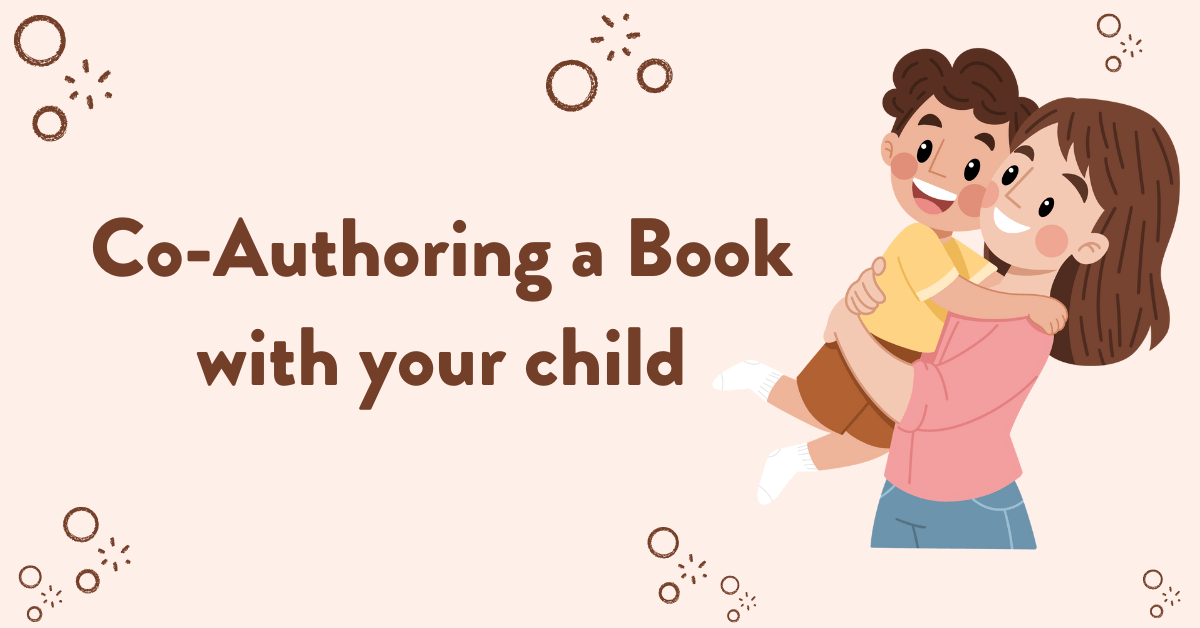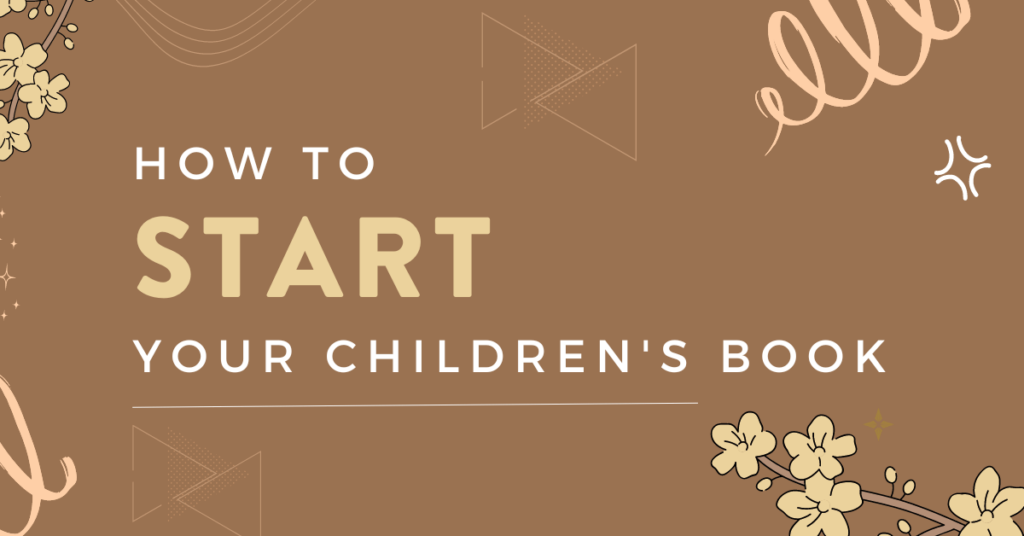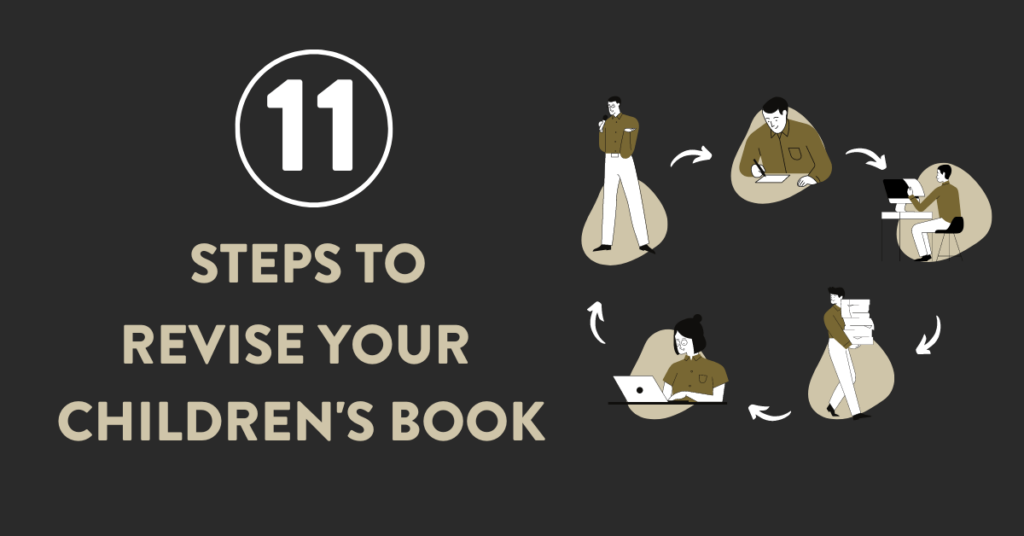
Ever thought about writing a children’s book with your child?
Picture this: you, snuggled up with your kiddo, brainstorming plot twists and creating new worlds together.
I’ve edited a couple dozen books written by parent/kid combos, and here’s what I’ve learned through working with them. (and I will say that I’ve really enjoyed the process of working with all of them).
Before we begin, I just have to say that you shouldn’t be afraid of collaborating with your kid. It’s a great experience and they’ll remember it forever. You should definitely do it!
And if you need help through the writing process, check out my post on “How to Write a Children’s Book in 12 Steps.”
With that said, let’s get into the nitty-gritty.
1. The 50/50 Dream Team
Parents, don’t take over the process. I know you would prefer to write it yourself, especially if you have high standards, but it’s essential that both voices – yours and your child’s – shine through equally.
Always check in with each other. Did one of you come up with the last three plot twists? Maybe it’s time for the other to take the reins on character development. Regularly chat about your ideas and ensure you’re weaving both imaginations into this tapestry.
You want to make sure your child feels like they’re an essential part of the process, and not like they’re a backup writer for their parents, or just along for the ride.
On the other side of things, don’t let your child completely take over. You want to veto some of their wilder ideas, and guide them through the process, and make sure your ideas get incorporated as well.
2. Perfect is Boring
Newsflash: the book doesn’t have to be perfect.
Parents who strive for Perfectionism end up letting their ideas take over and squelching the ideas of their kid.
Let’s be real – when you write a book with your kid, the story may have plot holes, mismatched ideas, or that odd character that doesn’t quite fit in. And guess what? That’s perfectly okay!
Instead of striving for an impeccable narrative, aim for authenticity. It’s the unique, raw, and sometimes ‘imperfect’ tales that capture hearts and linger in memories. Embrace every unexpected twist, every “oops” moment, and remember: in the world of storytelling, it’s the genuine and unpolished gems that often shine the brightest.
Let’s be honest: the point isn’t to create the next bestseller (though how cool would that be?). It’s all about bonding, creating, and growing. Keep expectations in check, and remember it’s the journey and the memories that truly matter.
Remember, writing a book with your kid is about collaboration and about teaching them how to move through a complicated process. They will learn far more from you if you all
3. Be a Dynamic Duo
You can’t both be the lead writer. Figure out a role your child can play in the writing process, and another role you can play.
These are the most common roles that parent/children take on:
- Creative Role: Your child is bubbling with wild, out-of-the-box scenarios. They generate a thousand ideas.
- Editorial Role: You have the knack for molding those into a coherent narrative. You have to put the kibosh on some, while encouraging others. You use your judgment to cull down their ideas and select only the best ones.
By understanding and embracing distinct roles, you can ensure the writing process is smoother and plays to both of your strengths.
It’s like a literary tag team – while one’s in the ring dazzling with their prowess, the other is cheering on, ready to jump in with their unique skills when needed.
4. The Art of Listening
We’ve all heard the age-old wisdom: “We have two ears and one mouth so that we can listen twice as much as we speak.”
This couldn’t be truer when co-authoring with your kiddo.
Listen to your child’s advice. Kids have an uncanny ability to spot inauthenticity, especially when it comes to dialogues or actions of younger characters. So if your child points out, “Hey, a kid wouldn’t say that!” it’s time to lend an ear.
On the flip side, kids should also be attuned to parents when they offer insights into more intricate plot structures or deeper character motivations. Kids should listen when a parent says, “That’s not believable.”
It’s all about mutual respect. Every observation, every critique, every bout of laughter at a shared idea – it’s the product of true listening.
5. Pick a Genre Together
Choosing a genre is like picking the perfect playground where both you and your child can frolic freely. It sets the tone, influences the characters, and creates a boundary (or a canvas!) for your imagination. When you’re co-authoring, blending interests and preferences is a delightful challenge. Here’s how you can nail it:
- Brainstorm Favorites:
- Begin by making a list of each of your favorite genres. You might be into gritty crime thrillers, while your kiddo is all about magical adventures. Get it all out on paper!
- Explore Crossovers:
- Where do your interests intersect? Maybe there’s a middle ground you haven’t explored yet. Ever thought about a detective story set in a magical realm? Bam! That’s a magical mystery waiting to be penned!
- Compromise and Combine:
- Sometimes, the most unique stories emerge from combining seemingly disparate elements. How about a historical fiction that borrows elements from fantasy? Or a romance sprinkled with sci-fi twists? Remember, this is a co-authored journey – mutual compromise can birth brilliant ideas.
6. Considering the Audience
Before diving into your shared storytelling journey, it’s essential to think about the readers’ shoes you want to fill. Who’s going to be flipping those pages or swiping on those screens?
This is the biggest decision you need to make: Are you writing just for fun, for close family, or dreaming of a wider audience?
The narrative changes based on this.
Potential Audiences:
- Family members (grandparents, cousins)
- Your child’s classmates or school friends
- Local community or book clubs
- Online communities or fan groups of a specific genre
- Broader audiences, if considering publishing
If you’re writing for a broader audience, you’re going to have to tell your child to avoid things like inside jokes, regional references, and things that a broader audience wouldn’t understand.
If you’re writing only for friends and family, there is much less pressure and you can just give your child free rein.
7. Embrace the Silly!
When co-authoring with your child, you have a golden opportunity to tap into the unbridled imagination that often comes naturally to younger minds.
Embracing the silly – the wacky, the unconventional, the downright zany – can lead to some of the most memorable and engaging stories. Here’s why and how you should lean into the fun:
1. Authentic Kid Voice:
Kids have a unique way of viewing the world, and it’s often sprinkled with a delightful dose of whimsy. By allowing silliness to shine, your story will resonate more genuinely with younger readers because it feels real and relatable.
2. Break from the Norm:
Let’s face it; conventional can sometimes be…well, dull. By embracing the offbeat, you’re giving your story a unique flavor. Think about classics like “Alice in Wonderland” – it’s the bizarre, whimsical elements that make them unforgettable.
3. Freedom to Experiment:
When you decide that anything goes, you open up a vast playground of creativity. Pink flying elephants? A detective that’s a talking muffin? Why not! Some of these “silly” ideas might just be the hook your story needs.
8. Edit with Empathy
Editing is a critical stage in the writing process. It shapes the rough edges, polishes the narrative, and enhances the story’s overall flow. But when co-authoring with your child, it’s crucial to approach this stage with a soft touch and a heart full of understanding.
- Recognize Their Pride:
- First and foremost, remember that the pages in front of you aren’t just words. They’re a product of your child’s imagination, their pride, and their vulnerable creative expression. Tread carefully, and celebrate their efforts before suggesting changes.
- Suggest, Don’t Dictate:
- Instead of pointing out “mistakes,” frame feedback as suggestions. Use phrases like “What if we tried…” or “How about exploring this angle?” This way, you’re collaborating, not correcting.
- 3. Use the Sandwich Method:
- Offer positive feedback (the bread), then a constructive suggestion (the filling), and end with more positive feedback (the other slice of bread). It’s an age-old technique that works wonders, especially with young minds.
And remember the goal. Editing isn’t just about grammatical accuracy or perfect plot structures. It’s about nurturing your child’s voice and ensuring that the story remains a blend of both your perspectives.
You’re not just refining a story – you’re cultivating a lifelong love for storytelling and reinforcing trust in your unique parent-child partnership.
9. Cherish the Memories
Co-authoring a book with your child isn’t just about the end product; it’s an emotional journey filled with cherished moments that last a lifetime.
- Bonding Over Bloopers:
Those shared giggles over a funny line, or the light debates on a character’s quirks? They’re more than just fleeting moments. They’re beautiful bonding experiences that echo the joy of togetherness. - Time Capsule of Growth:
Your combined story isn’t just fiction. It’s a snapshot of your child’s evolving thoughts and your journey as a guiding hand. It’s a silent testament to growth, captured in words. - The Real Treasure:
Sure, a finished book is rewarding. But the true gems? The side-by-side writing sessions, the brainstorming over hot cocoa, the shared dreamy gazes into the horizon, imagining far-off lands. Those are the moments of pure, unfiltered connection.
###
If you need an editor for your children’s book, I’ve worked with a bunch of parent/child author teams, and I’d be happy to help you with your book.
I offer sensitive and constructive feedback that will make your book better. I can also just focus on minor issues, like phrasing, copy editing, and other small details, if that’s what you’re looking for.
And once you’ve written your book, let the Bookfox Press team make publishing your book a breeze.
Just click that link to discover how we take care of everything from publishing to illustrations to formatting.
And happy writing!



